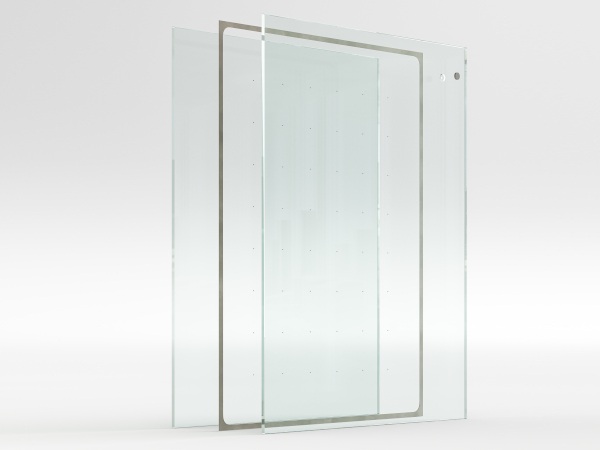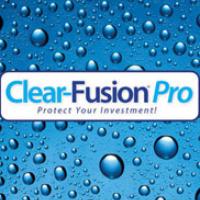Date: 3 November 2015
Controlling Solar EnergyThe primary purpose of glass coatings is to control the three types of incident solar radiation: ultraviolet, visible light and infrared: Ultraviolet (UV) light -electromagnetic energy with wavelengths in the range of 280 to 380 nanometers.UV radiation represents only about three percent of the solar spectrum, but is a primary contributor to fading of fabrics, finishes, carpeting, etc.
An ideal architectural glass utilizes appropriate substrate formulations and surface coatings to achieve the optimum balance between visible light transmittance and blocking the greatest possible amount of unwanted solar energy.
The three common glass performance characteristics that architects and mechanical engineers use to compare various glass products and gauge potential environmental impact and performance are:
- Visible Light Transmittance (VT or VLT), which measures the percentage of visible light that the glass transmits.
- Solar Heat Gain Coefficient (SHGC), which quantifies the amount of solar energy that passes directly through or is absorbed into a building through the glass.
- Light to Solar Gain (LSG) ratio, which is derived by dividing VLT by SHGC.
Today’s double-glazed insulating glass can feature coatings on any of the four surfaces, identified numerically and sequentially from surface 1 (outermost, exposed to the weather) to surface 4 (innermost, facing the building interior).
Surface 1
Coatings typically considered for the exterior “weather” surface are:
- Reflective coatings: metallic layers applied to float glass, usually composed of thin, metallic layers, such as silver, gold or bronze. They are intended to reflect solar energy back into the atmosphere. While highly reflective coatings absorb the largest portion of direct solar energy that is not reflected and the glass can get very hot, the interior spaces remain cooler and more comfortable and ongoing air conditioning expenses are reduced.
- Self-Cleaning coatings: offering more convenience than energy savings, a thin layer of TiO2 (titanium dioxide) breaks down organic dirt on the glass, and also has a cleaning effect.
Surfaces 2 and 3
Low-emissivity (Low-E) coatings consist of a microscopically thin layer of metal or metallic oxide, such as silver or tin oxide, deposited directly on the surface of the glass. These coatings reflect radiant energy back toward its source rather than absorbing and conducting it out through the glass.
Low-e coated glass has an emissivity as low as 0.04, thus reflecting as much as 96 percent of long-wave radiation back toward the source. Depending on the surface to which it’s applied, a low-e coating reflects heat back into the room, reducing heat loss through the window; or reflects the solar heat back outdoors, thus lowering solar heat gain and keeping the room cooler.
Low-e coatings can be applied by both sputter and pyrolytic coating processes.
- “Hard” or Pyrolytic Coatings are applied using a chemical vapor deposition process during the float process. Because these coatings are a permanent part of the finished glass itself, they are extremely durable and tough—hence the common name “hard” coating.
- “Soft” or Sputter Coatings are applied through a magnetic sputter vapor deposition process separate from the float glass process. These “sputter” coatings are less durable than pyrolytic coatings, and therefore must be applied to Surface 2 or 3 for protection. They can be applied to any glass substrate, and cover the full range of performance and aesthetic requirements.
Spectrally-Selective Low-E. Today’s advanced “triple-silver” low-E coatings combine the best qualities of low-e, tinted and reflective glass. Multiple layers of silver in the coating, in addition to reflecting the long-wave heat radiation, also selectively transmit visible light waves and reflect infrared heat waves. This effectively filters out 40-70 percent of heat normally transmitted through insulated glazing, while allowing visible wavelengths to come through.
Enhanced Low-e Glass. Promising technical approaches to improve low-e coatings include creating a more durable silver layer through treatment with plasma during growth, modification of the surrounding oxide layers, and variation in silver alloy composition.
Surface 4
In order to improve the energy efficiency of insulated glass units without increasing the thickness or weight of the window, low-e ‘hard coats’ can be applied to the 4th surface of the double glazed unit. Working in combination with a low-e coating on surface 2 can create a significant reduction in U-factor of approximately 20 percent.
This construction is designed to reflect long wave infrared radiation back to the interior environment thereby decreasing thermal transmittance and achieving a U-factor approaching 0.20 BTU/hr-ft2-°F (1.14 W/m2-K), or “R-5.”
Care must be taken, however, as the interior parts of the window may not be kept warm enough, and the sash/frame temperatures can drop below the dew point temperature of the indoor air, degrading condensation resistance.
Future Coating Technology: Dynamic Glazing
Just beginning to appear on the scene are “smart windows” equipped with “dynamic glazing,” which allow building occupants to manually or automatically control a window to change from clear to dark to meet the optimal solar control requirements of the day or season.
Major contenders are electrochromic windows, included in the DOE’s Window Industry Technology Roadmap, which can have their reflective and emissive performancedynamically changed – electronically, literally with the flip of a switch. A small voltage applied to the windows will cause them to darken. Such glass could reduce the amount of energy required for comfort cooling by up to 50 percent.
As time and technology unfold, we are finding that “tunable” coatings better define window performance for very specific project requirements.























Add new comment